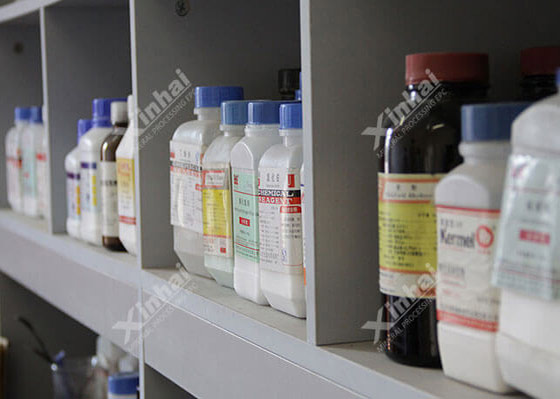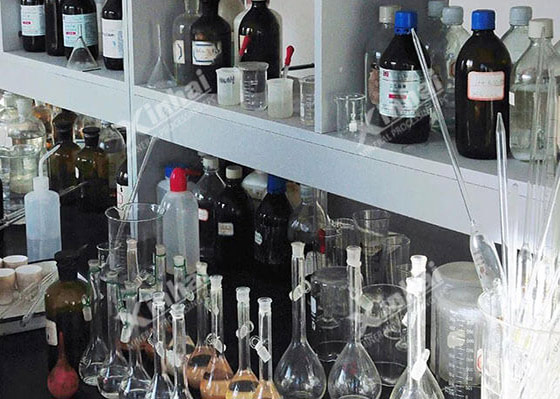
Lithium is known as "the new energy metal of the 21st century". Today, the demand for lithium resources is still increasing. Lithium is currently mainly derived from lithium ore. The main lithium-containing minerals in lithium ore are spodumene, lepidolite, lepidolite, lepidolite and lepidolite. Among them, spodumene is an important lithium mineral resource.
At present, the beneficiation processes of spodumene mainly include: manual separation, magnetic separation, flotation and combined beneficiation. Among them, the flotation separation process is the most frequently used and widely used. In the flotation separation technology, the focus is on the choice of flotation reagents. The commonly used flotation reagents for spodumene are mainly collectors and regulators.
Single collectors are mostly used in laboratory research. Spodumene ore flotation is currently mainly divided into two processes: reverse flotation cationic collector and positive flotation anionic collector. Common reverse flotation cationic collectors are amine collectors, and the most commonly used is dodecylamine. Such agents can reverse flotation of gangue minerals such as quartz and mica in acid slurry. This method is mainly suitable for rough selection operations. But the application is not universal. The anionic collectors of traditional positive flotation spodumene are mostly fatty acid and its soap collectors, such as oleic acid, sodium oleate, naphthenic acid soap, oxidized paraffin soap, etc. The advantages of this type of collector are wide range of use, low price and strong collection ability. Its disadvantages are poor selectivity, sensitivity to temperature, intolerant of hard water, and significant fluctuations in mineral processing indexes.

The use of combined collectors can usually play a synergistic effect of multiple agents, so as to obtain the ideal flotation separation index. A domestic spodumene ore was treated with sodium oleate + oxidized paraffin soap as a combined collector, and a spodumene concentrate with a Li 2 O grade of 6% and an operating recovery rate of 62% was obtained. In the case of using oxidized paraffin soap + oximic acid as the combined collector, the raw ore with a Li2O grade of 1.25% was flotated to obtain a concentrate with a Li2O grade of 6.21% and a recovery rate of 76.30%. The use of combined collectors can significantly improve the mineral flotation separation effect and reduce the dosage of chemicals, thereby significantly improving the economic benefits of the enterprise.
In recent years, new and efficient collectors for spodumene flotation have emerged. Most of the high-efficiency collectors developed for spodumene flotation are chelating collectors. Although it has the characteristics of good selectivity and excellent performance, the price is generally high. In practical production applications, its promotion has certain difficulties.
Spodumene ore flotation regulators are mainly "three alkalis", namely Na2CO3, NaOH, Na2S and CaCl2.

Activation effect of regulator and metal ions: The hydroxyl complexes generated by metal ions under neutral or weak alkaline conditions have high adsorption, which can greatly improve the collection ability of minerals, thereby improving the flotation effect.
The effect of regulators and traditional inhibitors: when calcium chloride, sodium carbonate, sodium hydroxide and other alkaline regulators are added, the sludge composed of silicate minerals in the pulp will react with alkali to form a certain amount of sodium silicate . It is an inorganic inhibitor by itself and has the same effect on flotation as the addition of traditional inhibitors. Therefore, inorganic inhibitors are not deliberately added in flotation practice.
Effects of modifiers and new inhibitors: among the new inhibitors, citric acid and lactic acid have weak selectivity for the inhibition of spodumene and beryl. Tartaric acid and oxalic acid were highly inhibitory to the two minerals, but were not selective. Na2S, sodium hexametaphosphate and disodium EDTA have strong inhibition and selectivity. Among them, the selective inhibition of spodumene by disodium EDTA is better.
The main reason for the current hindered development of lithium resources is the difficulty of flotation separation of spodumene ore. According to the properties and characteristics of the ore, the research and development of green and environmentally friendly new reagents and efficient combination reagents will create favorable conditions for the flotation and separation of spodumene and gangue minerals, which is an important direction for the progress of spodumene ore flotation technology.
To find out more about our products and solutions, please fill out the form below and one of our experts will get back to you shortly.